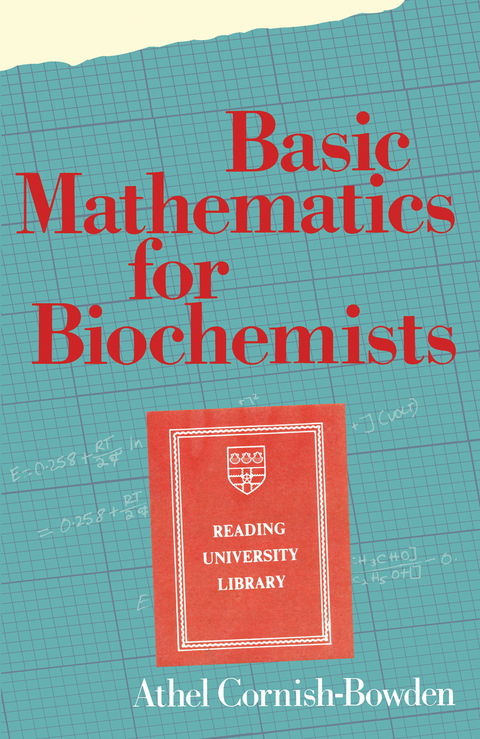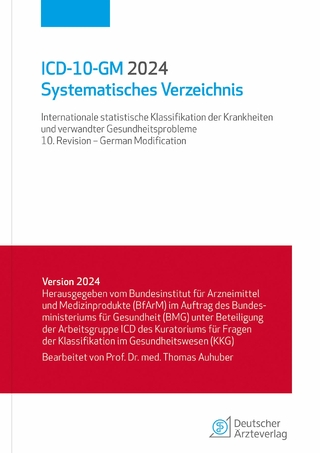
Basic Mathematics for Biochemists
Chapman and Hall (Verlag)
978-0-412-23010-3 (ISBN)
Some teachers of biochemistry think it positively beneficial for students to struggle with difficult mathematics. I do not number myself among these people, although I have derived much personal pleasure from the study of mathematics and from applying it to problems that interest me in biochemistry. On the contrary, I think that students choose courses in biochemistry out of interest in biochemistry and that they should not be encumbered with more mathematics than is absolutely required for a proper understanding of biochemistry. This of course includes physical chemistry, because a biochemist ignorant of physical chemistry is no biochemist. I have been guided by these beliefs in writing this book. I have laid heavy emphasis on those topics, such as the use of logarithms, that play an important role in biochemistry and often cause problems in teaching; I have ignored others, such as trigonometry, that one can manage without. The proper treatment of statistics has been more difficult to decide. Although it clearly plays an important part in all experi mental sciences, it is usually preferable to treat it as a subject in its own right and not to try to incorporate it into a course of elementary mathematics. In this book, therefore, I have used a few examples from statistics to illustrate more general points, but I have not discussed it for its own sake.
1 The Language of Mathematics.- 1.1 Introduction.- 1.2 Priority rules for operators.- 1.3 The summation sign.- 1.4 Functions.- 1.5 Constants, variables and parameters.- 1.6 Dimensional analysis.- 1.7 Plotting graphs.- 1.8 Precision.- 1.9 Problems.- 2 Exponents and Logarithms.- 2.1 Integer powers.- 2.2 Fractional exponents.- 2.3 Addition and subtraction of exponents.- 2.4 Logarithms.- 2.5 Common logarithms.- 2.6 Negative numbers have no logarithms.- 2.7 Natural logarithms.- 2.8 Logarithms to base 2.- 2.9 Exponential decay.- 2.10 Logarithms as a method of scaling.- 2.11 Products of equilibrium constants.- 2.12 Logarithms of dimensioned quantities?.- 2.13 Redox potentials.- 2.14 Dependence of redox potentials on pH.- 2.15 Problems.- 3 Differential Calculus.- 3.1 Co-ordinate geometry.- 3.2 Slope of a curve.- 3.3 Rapid differentiation.- 3.4 Derivatives of sums and products.- 3.5 Derivative of a ‘function of a function’.- 3.6 Derivative of a ratio.- 3.7 Higher derivatives.- 3.8 Notation.- 3.9 Maxima and minima.- 3.10 A note on terminology.- 3.11 Points of inflexion.- 3.12 Sketching curves.- 3.13 Problems.- 4 Integral Calculus.- 4.1 Increases in area.- 4.2 Definite and indefinite integrals.- 4.3 Simple integrals.- 4.4 Integral of 1/x.- 4.5 Differential equations.- 4.6 Numerical integration: evaluating the area under a curve.- 4.7 Problems.- 5 Solving Equations.- 5.1 Linear equations in one unknown.- 5.2 Rearranging equations.- 5.3 Simultaneous linear equations.- 5.4 Determinants.- 5.5 Quadratic equations.- 5.6 Graphical solution of equations.- 5.7 Newton’s method.- 5.8 Approximate methods.- 5.9 Problems.- 6 Partial Differentiation.- 6.1 Meaning of a partial derivative.- 6.2 Exact and inexact differentials.- 6.3 Least-squares fitting of the Michaelis—Menten equation.-6.4 Problems.- Notes and Solutions to Problems.
| Erscheint lt. Verlag | 3.9.1981 |
|---|---|
| Zusatzinfo | X, 138 p. |
| Verlagsort | London |
| Sprache | englisch |
| Maße | 140 x 216 mm |
| Themenwelt | Informatik ► Weitere Themen ► Bioinformatik |
| Mathematik / Informatik ► Mathematik ► Angewandte Mathematik | |
| Naturwissenschaften ► Biologie ► Biochemie | |
| Sozialwissenschaften | |
| ISBN-10 | 0-412-23010-0 / 0412230100 |
| ISBN-13 | 978-0-412-23010-3 / 9780412230103 |
| Zustand | Neuware |
| Haben Sie eine Frage zum Produkt? |
aus dem Bereich



